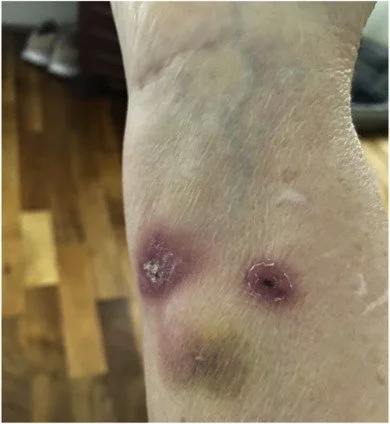Cases of Sporothrix brasiliensis in cats outside Brazil
Sporotrichosis is caused by a group of saprophytic dimorphic fungi from the genus Sporothrix and classically presents as cutaneous or lymphocutaneous ulcerated lesions. It may progress to disseminated disease, especially in the context of immunosuppression, and may manifest as osteoarticular, conjunctival or meningitic disease. Pulmonary involvement with chronic cavitating disease is rare and caused by the direct inhalation of conidia.
An epidemic of cat-transmitted sporotrichosis caused by Sporothrix brasiliensis has emerged as a major public health threat in Brazil starting in the 1990’s, with over 5000 human and 5000 feline cases have been reported at a single location . A new study reported the first three cases of cat-transmitted sporotrichosis caused by Sporothrix brasiliensis outside South America, and the first ever cases of cat-transmitted sporotrichosis in the United Kingdom.
Clinically, a case series of 178 patients with CTS in Rio de Janeiro from 1998 to 2001 found over 90% of patients admitted contact with cats, and 65% had received a traumatic injury from a cat. 55% presented with lymphocutaneous disease, 25% localised cutaneous, and 16% widespread cutaneous, with a median of seven lesions. 30% had concurrent arthritis, and of those not lost to follow-up, all either resolved spontaneously or with itraconazole [3].
The new study of three human cases caused by S. brasiliensis in the UK following contact with a domestic cat and outline the public health response to the outbreak.

Given the potential risk of CTS linked to imported cats in the UK and globally, clinicians should be aware of the clinical features of sporotrichosis and consider it early in cat owners with non-healing ulcers with or without lymph node involvement, especially if there is a history of feline bites or scratches. Skin biopsies of the lesion should be sent for fungal culture, histology with fungal staining, and panfungal PCR when suspected.
Clinicians must suspect CTS as part of the differential in cat owners with lymphocutaneous manifestations. Animal health authorities worldwide should re-examine their border control policies to consider pre-import screening of cats from endemic areas and working with public health agencies to improve awareness amongst those owning or treating cats from endemic areas of the signs and symptoms of feline sporotrichosis to prevent zoonotic transmission.
Read the full article by clicking on the link below:

